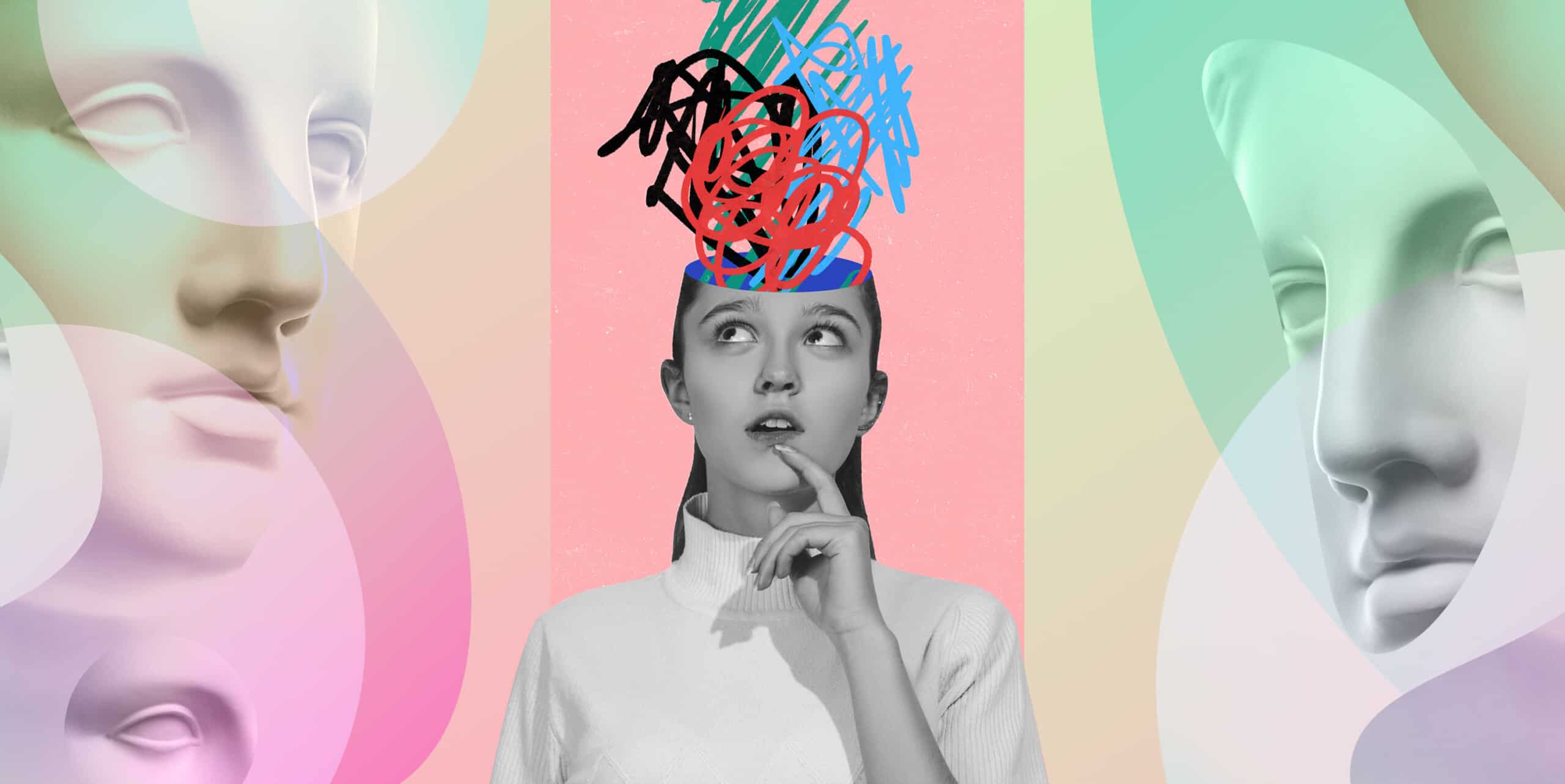Branding
Understanding Archetype Branding, What It Does, and Its Benefits

Modern brands need to connect with their audience in a deep and meaningful manner to help build authenticity, loyalty, and trust. This is where archetype branding comes in.
In an increasingly competitive digital marketplace, having amazing products, a great logo, and a catchy slogan may not be enough–especially without a brand story. As such, choosing the right archetype for your business can help transform your sales pitch and value proposition into a character that prospects can understand and relate to.
This blog post discusses the definition of archetype branding and how your business can benefit from it.
What is Archetype Branding?
A brand archetype is your brand’s representation as a persona based on 12 key human desires and values, like belonging, power, and safety. The idea behind archetype branding is to build a brand narrative that will form an emotional connection with your prospects.
Archetype Branding: Who Invented Brand Archetypes?
Personality archetypes are the brainchild of Swiss psychologist Carl Jung in the 1940s. He believed these personality archetypes were innate and hereditary, representing one’s model image transcending language, culture, and time.
These archetypes influence human behavior subconsciously, resulting in behavioral changes and preferences. How does this relate to your business goals? Understanding these archetypes will help you better tell your brand’s story and appeal to your target audience more effectively.
 The 12 Brand Archetypes & Examples
The 12 Brand Archetypes & Examples
1. The Innocent:
The main themes for this archetype are purity, trust, and happiness. The innocent often craves safety and views things from a glass-half-full perspective. Innocent brands are carefree, simple, and happy. They are the character that customers turn to when longing for a refreshing positive-minded boost. A classic example is Coca-Cola, whose marketing is primarily about highlighting the beauty of simple, meaningful actions and innocent moments.
2. The Everyman:
The everyman character is humble, approachable, and all about quality over quantity. In addition, they are warm, friendly, and the most flexible archetype. The everyman brand doesn’t aim for a quick sell but ultimately for personal connection. ASOS is a fashion brand that effortlessly comes off as relatable “everypeople.” Its social feeds are filled with memes demonstrating that the brand is just the same as its audience.
3. The Hero:
The hero craves mastery and is on a mission to change the world. They display courage, honesty, and bravery and don’t back down from challenges. A hero brand typically leaves the customers feeling strong, motivated, and empowered. Nike is the perfect hero archetype brand. Its marketing is filled with stories of individuals–from regular consumers to high-profile ambassadors–striving to beat the odds to accomplish greatness.
4. The Rebel/The Outlaw:
The rebel outlaw archetype is cool and endearing. “Rules are meant to be broken” is their slogan. Rebel brands don’t adhere much to social norms and, in fact, thrive in creating shock and awe. Harley-Davidson is commonly associated with the outlaw archetype. It’s almost impossible to picture an “outlaw” without imagining them riding through on a Harley.
5. The Explorer:
The explorer archetype craves freedom and excitement. This archetype is more suited for outdoor and adventure brands. Explorer brands are brave, outgoing, and full of discovery. A good example of the explorer archetype is REI, a leading outdoor gear brand.
6. The Creator:
The creator archetype is artistic and longs for innovation. Creator brands are bold, creative, and invent new things. The creator, like Adobe, is all about building imaginative, enduring products. Adobe has achieved this with a tool kit that includes Photoshop, InDesign, and Illustrator.
7. The Ruler:
The ruler archetype craves control and values power, status, and organization. In most cases, ruler brands focus on creating exclusivity and status. This archetype is typically associated with luxury brands, such as Rolex or Mercedes.
8. The Magician:
Common traits associated with this archetype include mystery, transformation, and potential. The magician archetype is intuitive and charismatic. In addition, the Magician brand believes anything can happen. Dyson has successfully positioned itself as the Magician, thus achieving the seemingly impossible by making vacuum cleaners appear interesting, cool, and ultimately command a higher price point. Dyson has taken the same approach with various other products, such as air purifiers and hair straighteners.
9. The Lover:
Intimacy is an important human need. The lover understands and craves it. The Lover seeks to tap into intimacy, thus sharing products and services that unite people. A perfect example is Hallmark, a leading greeting card company dedicated to “creating a more emotionally connected brand and making a difference in the lives of others.” This focus on meaningful, intimate relationships is central to the lover archetype.
10. The Caregiver:
The caregiver is nurturing, helpful, and altruistic. The caregiver can be associated with the hero archetype since they share a common passion for improving the world. However, the hero is stronger in tone and presence, while the caregiver exudes love and empathy. Volvo has positioned itself as a caregiver by building safer cars and using sustainable materials.
11. The Jester:
The Jester archetype is the fun type. They seek to spread joy through fun and humor. Entertainment is often the key to successfully marketing a jester brand. A perfect example is Old Spice, which tends to go a more zany and humorous direction with its marketing.
12. The Sage:
The sage archetype seeks to understand and prioritizes the pursuit and sharing of knowledge. Brands that depict this archetype typically include education and knowledge-focused companies, like Discovery. Another perfect example of the Sage archetype is TED Conferences, whose sole mission is to spread ideas from the world’s leading innovators and thinkers.
Discovering your brand archetype can help strengthen and guide your company’s personality. This way, you can attract and retain your ideal customer base.
 Archetype Branding – A Key Component of Brand Strategy
Archetype Branding – A Key Component of Brand Strategy
A brand archetype tells a story. As a business, your origin story should be unique to you, especially in the competitive digital marketplace. Using your brand archetype can help you stand out. Your origin story can also make your brand more emotionally appealing to your customers. By illustrating your ability to embrace changes head-on. More importantly, it can express your brand’s understanding of your prospects and their pain points.
Benefits of Archetype Branding
Here are reasons why you need archetype branding for your business:
Discover Your Identity and What You Stand for
Discovering your brand’s archetype gives it personality and meaning. It creates a clear picture in your customers’ and prospects’ minds. In addition, it separates your brand and its message from the competitors in your industry.
Create Deeper Emotional Connections
Archetypes guide how your brand interacts with the target audience. Once you understand your brand’s archetype, marketing strategies become much easier to improve and implement. This is because your target audience feels more connected and in touch with your brand.
Tell Your Brand Story
By knowing your brand archetype, you can effectively find and tell the right brand story. A solid and unique brand story builds brand recognition. It also creates a strong awareness of your brand’s details and mission. Furthermore, consistently using your brand archetype as a guide will make your messaging more cohesive and believable. It helps inform word choice, color, and even image selection.
Encourage Brand Loyalty
Brand archetypes encourage employee and customer loyalty. When employees choose to work for you, it is proof that they believe in the epitome of your brand. Fortunately, employees are in an advantageous position to advocate for your brand through their interactions with customers.
Consumers nowadays don’t simply purchase a product. In many cases, they are also purchasing the meaning and emotions attached to the product. Consider the success of brands like Patagonia and their mission to be stewards of the environment. This tactic drives sales because their audience identifies with this important social initiative.
How to Find Your Brand Archetype
Here is how to define and create your brand archetype:
1. Refer to your values and mission for direction.
2. Build on emotion. Consider what emotions you want your audience to feel when connecting with your brand. Also, consider the emotions that your company embodies. Being authentic in your tone is key to successful archetype branding.
3. Think of your audience. Ask yourself if they will relate to your brand and how they will respond.
Bottom Line
Though relatively new in the business industry, archetypes have been used for decades in other ventures, such as films. Brand archetypes help you determine the human traits that accurately depict your brand.
Consequently, your brand can create deeper connections with your target audience based on emotional interactions. Brand archetypes appeal to those you aim to serve, enticing your audience to your brand through shared values. The result is improved brand perception, brand advocacy, and a more active and loyal customer base.
At Hyfyve, we are dedicated to providing top-notch branding and rebranding services. Contact us to help you with your marketing and branding needs.
FAQ
How do you align your brand’s marketing strategies with your chosen archetype to ensure consistency across all channels?
To align your brand’s marketing strategies with your chosen archetype, start by defining the core characteristics and values of the archetype. Develop a brand voice and messaging that reflect these traits. Use consistent imagery, colors, and language across all marketing channels that resonate with the archetype’s narrative. Regularly review and adjust your strategies to ensure they stay true to the archetype and resonate with your audience.
Can a brand change its archetype, and if so, how should this transition be managed?
Yes, a brand can change its archetype, especially in response to significant shifts in its business model, target audience, or industry trends. This transition should be managed carefully to maintain brand integrity. Start by researching and selecting a new archetype that aligns with your brand’s evolved identity and goals. Communicate the change through a rebranding campaign that explains the reasons behind the transition and introduces the new brand persona to your audience.
How do you measure the effectiveness of archetype branding in achieving your marketing and business objectives?
Measure the effectiveness of archetype branding by tracking key performance indicators (KPIs) related to brand awareness, engagement, and loyalty. This can include metrics such as website traffic, social media engagement rates, customer feedback, and repeat purchase rates. Surveys and market research can also provide insights into how well your brand’s archetype resonates with your target audience and contributes to achieving your marketing and business objectives.


